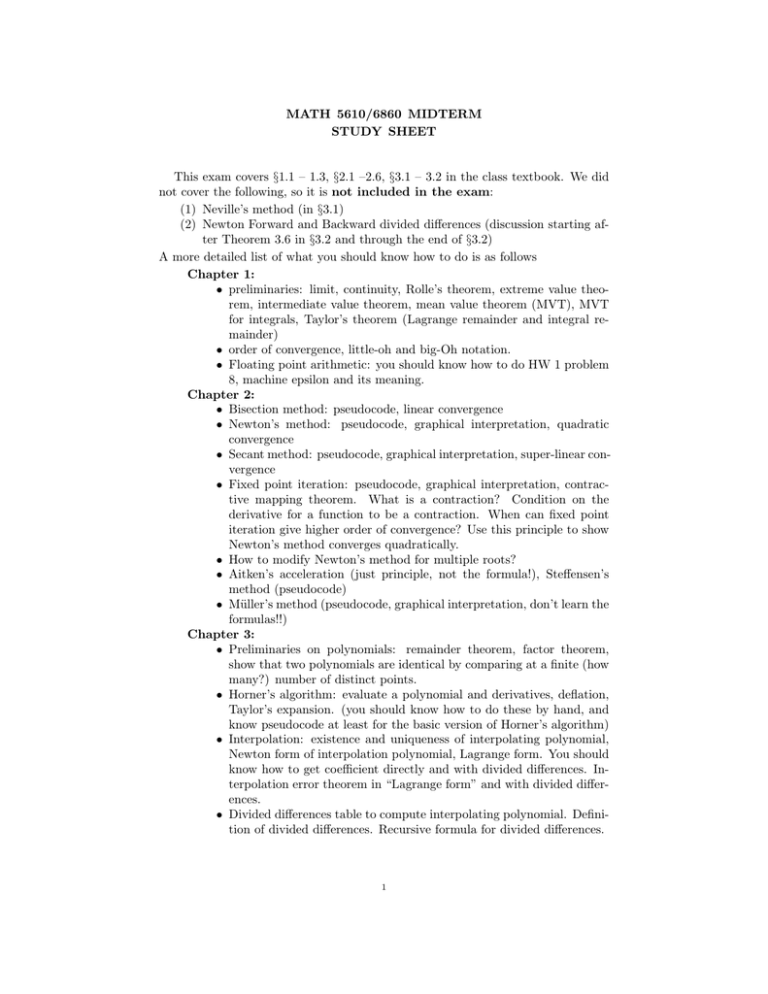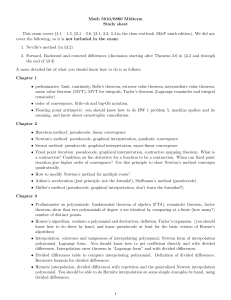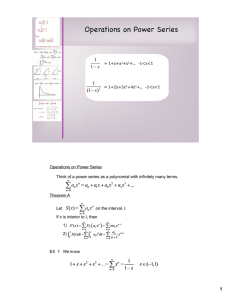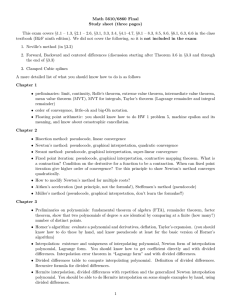MATH 5610/6860 MIDTERM STUDY SHEET
advertisement

MATH 5610/6860 MIDTERM STUDY SHEET This exam covers §1.1 – 1.3, §2.1 –2.6, §3.1 – 3.2 in the class textbook. We did not cover the following, so it is not included in the exam: (1) Neville’s method (in §3.1) (2) Newton Forward and Backward divided differences (discussion starting after Theorem 3.6 in §3.2 and through the end of §3.2) A more detailed list of what you should know how to do is as follows Chapter 1: • preliminaries: limit, continuity, Rolle’s theorem, extreme value theorem, intermediate value theorem, mean value theorem (MVT), MVT for integrals, Taylor’s theorem (Lagrange remainder and integral remainder) • order of convergence, little-oh and big-Oh notation. • Floating point arithmetic: you should know how to do HW 1 problem 8, machine epsilon and its meaning. Chapter 2: • Bisection method: pseudocode, linear convergence • Newton’s method: pseudocode, graphical interpretation, quadratic convergence • Secant method: pseudocode, graphical interpretation, super-linear convergence • Fixed point iteration: pseudocode, graphical interpretation, contractive mapping theorem. What is a contraction? Condition on the derivative for a function to be a contraction. When can fixed point iteration give higher order of convergence? Use this principle to show Newton’s method converges quadratically. • How to modify Newton’s method for multiple roots? • Aitken’s acceleration (just principle, not the formula!), Steffensen’s method (pseudocode) • Müller’s method (pseudocode, graphical interpretation, don’t learn the formulas!!) Chapter 3: • Preliminaries on polynomials: remainder theorem, factor theorem, show that two polynomials are identical by comparing at a finite (how many?) number of distinct points. • Horner’s algorithm: evaluate a polynomial and derivatives, deflation, Taylor’s expansion. (you should know how to do these by hand, and know pseudocode at least for the basic version of Horner’s algorithm) • Interpolation: existence and uniqueness of interpolating polynomial, Newton form of interpolation polynomial, Lagrange form. You should know how to get coefficient directly and with divided differences. Interpolation error theorem in “Lagrange form” and with divided differences. • Divided differences table to compute interpolating polynomial. Definition of divided differences. Recursive formula for divided differences. 1





